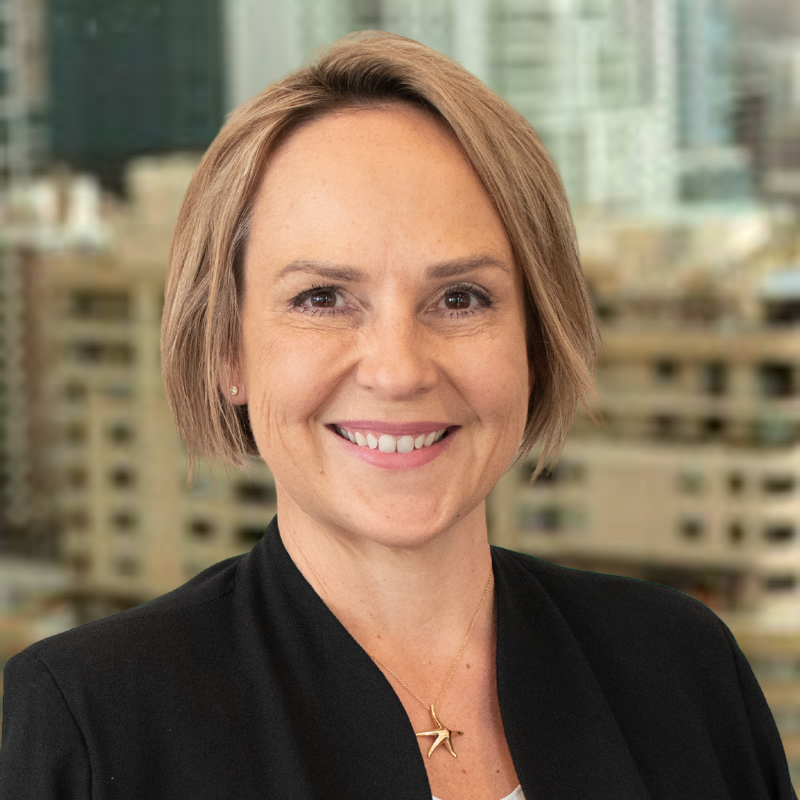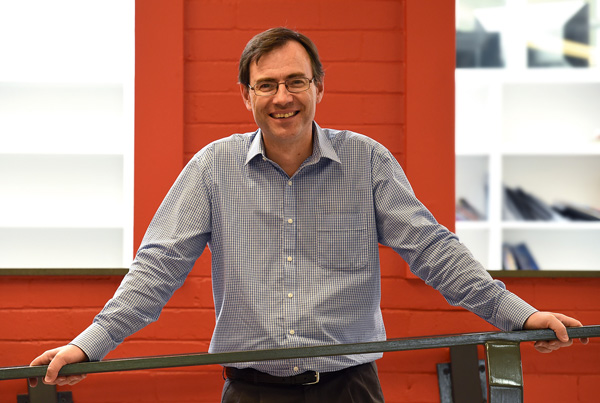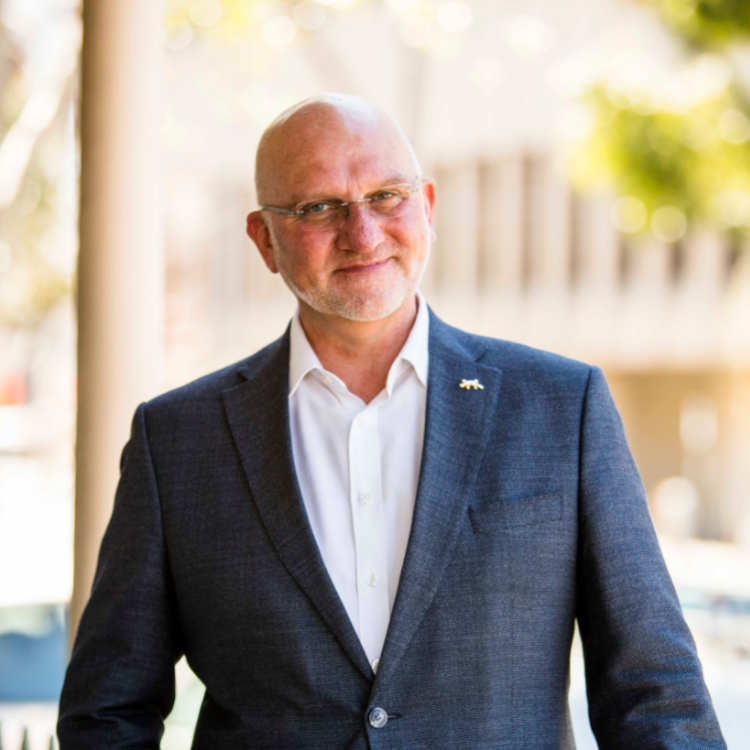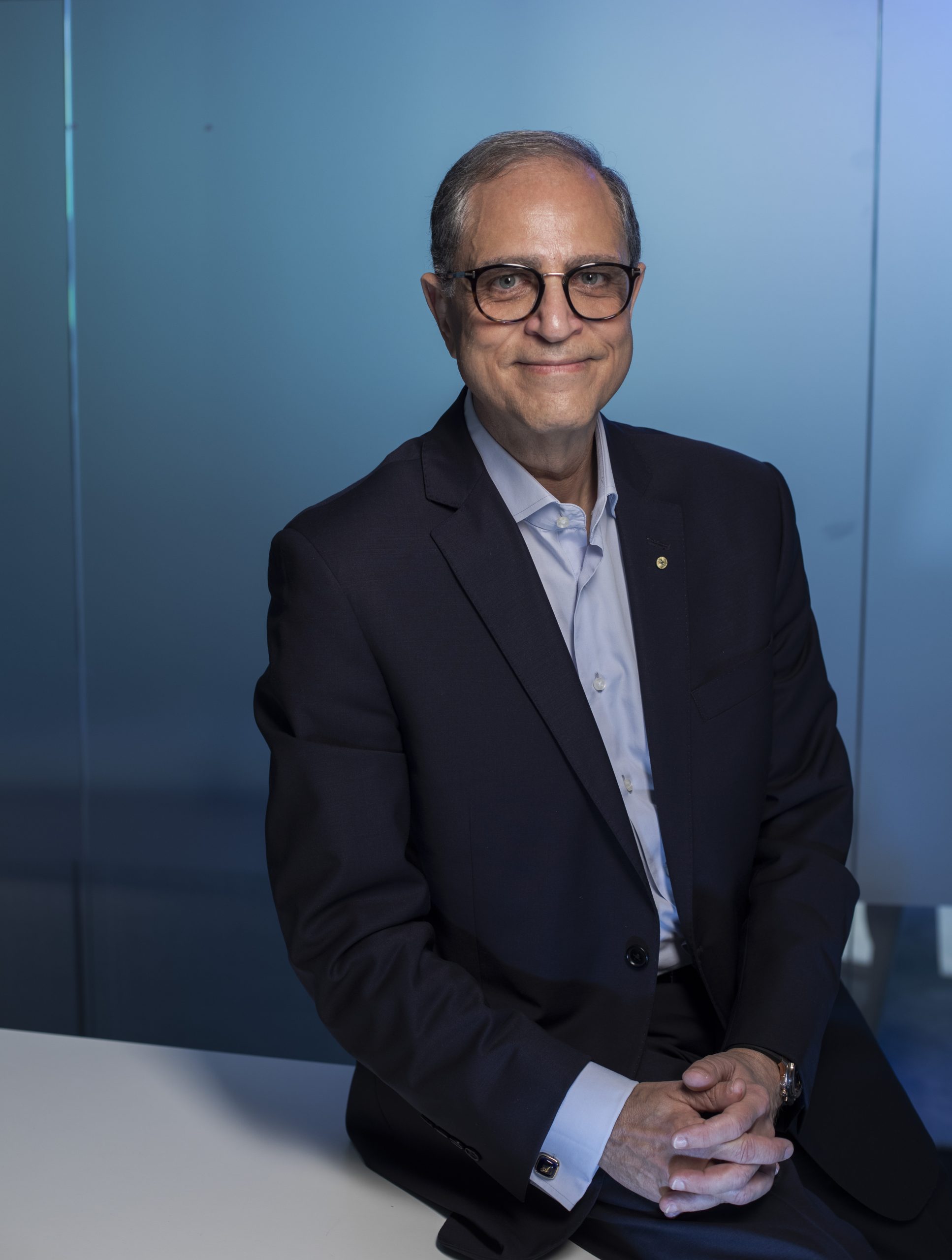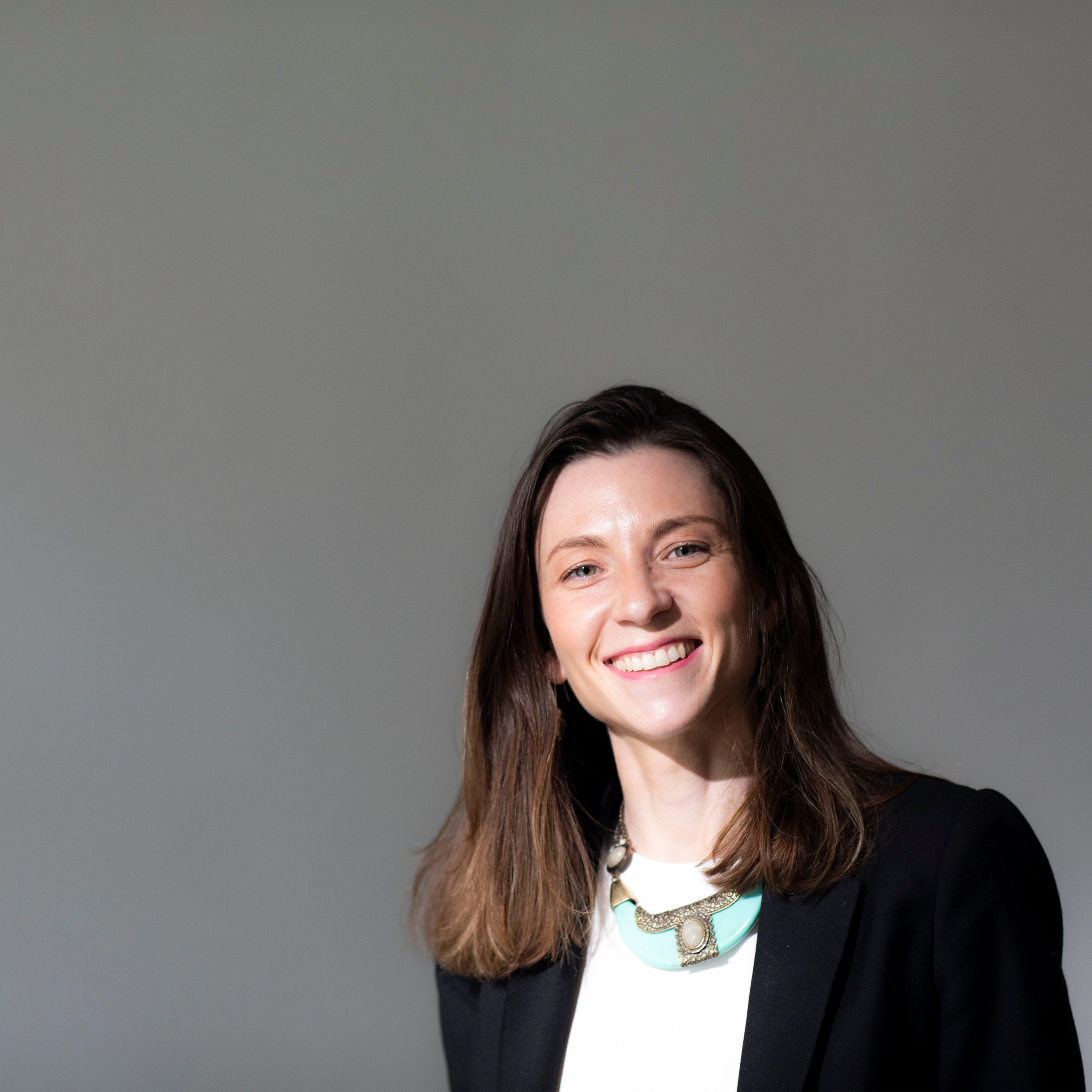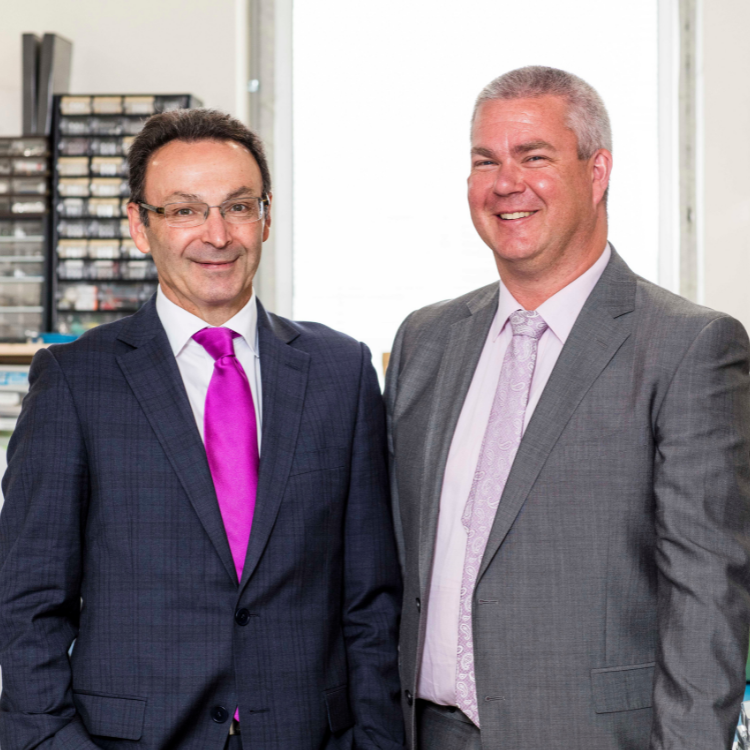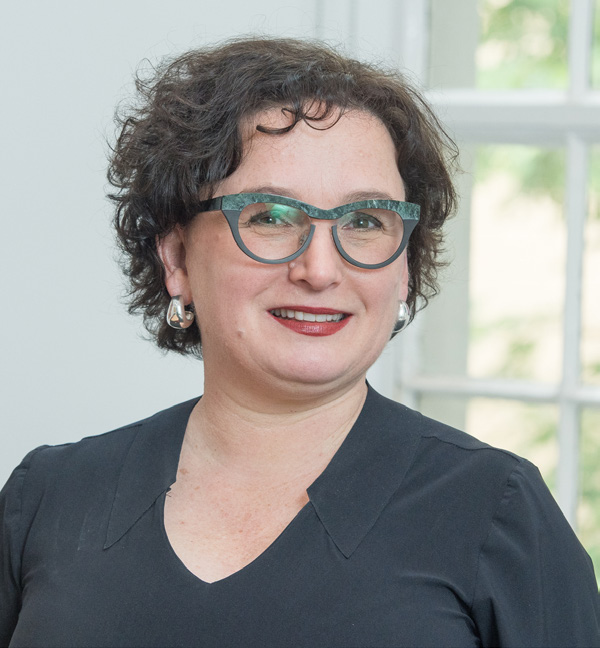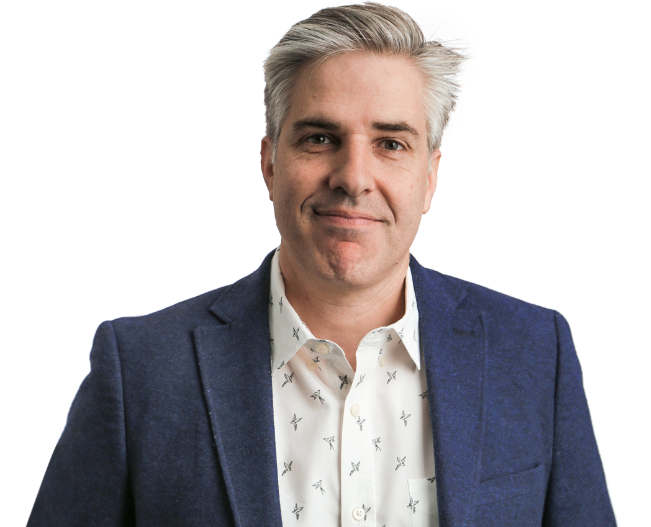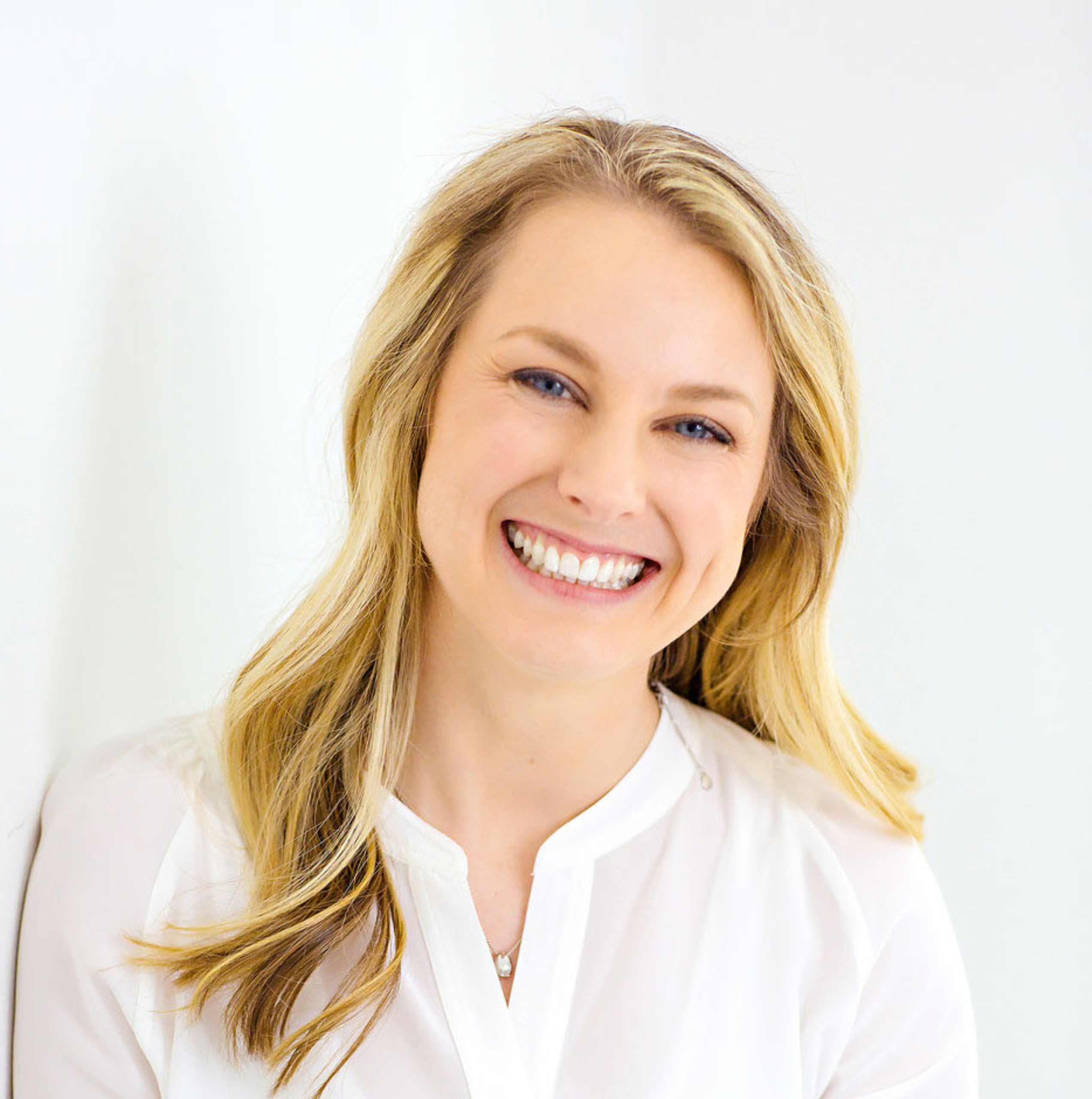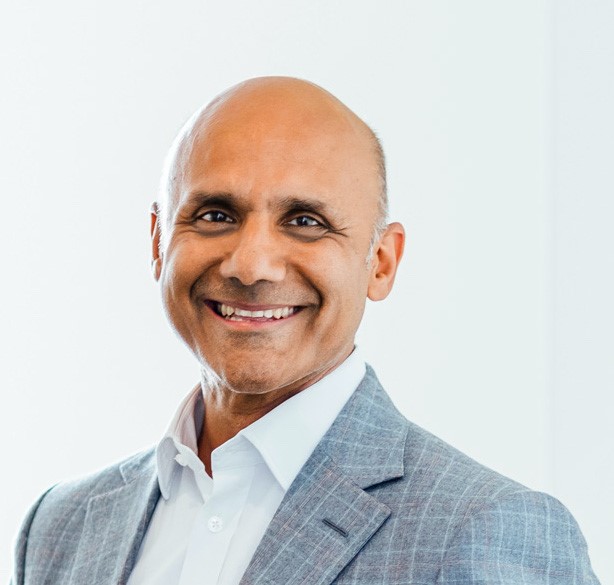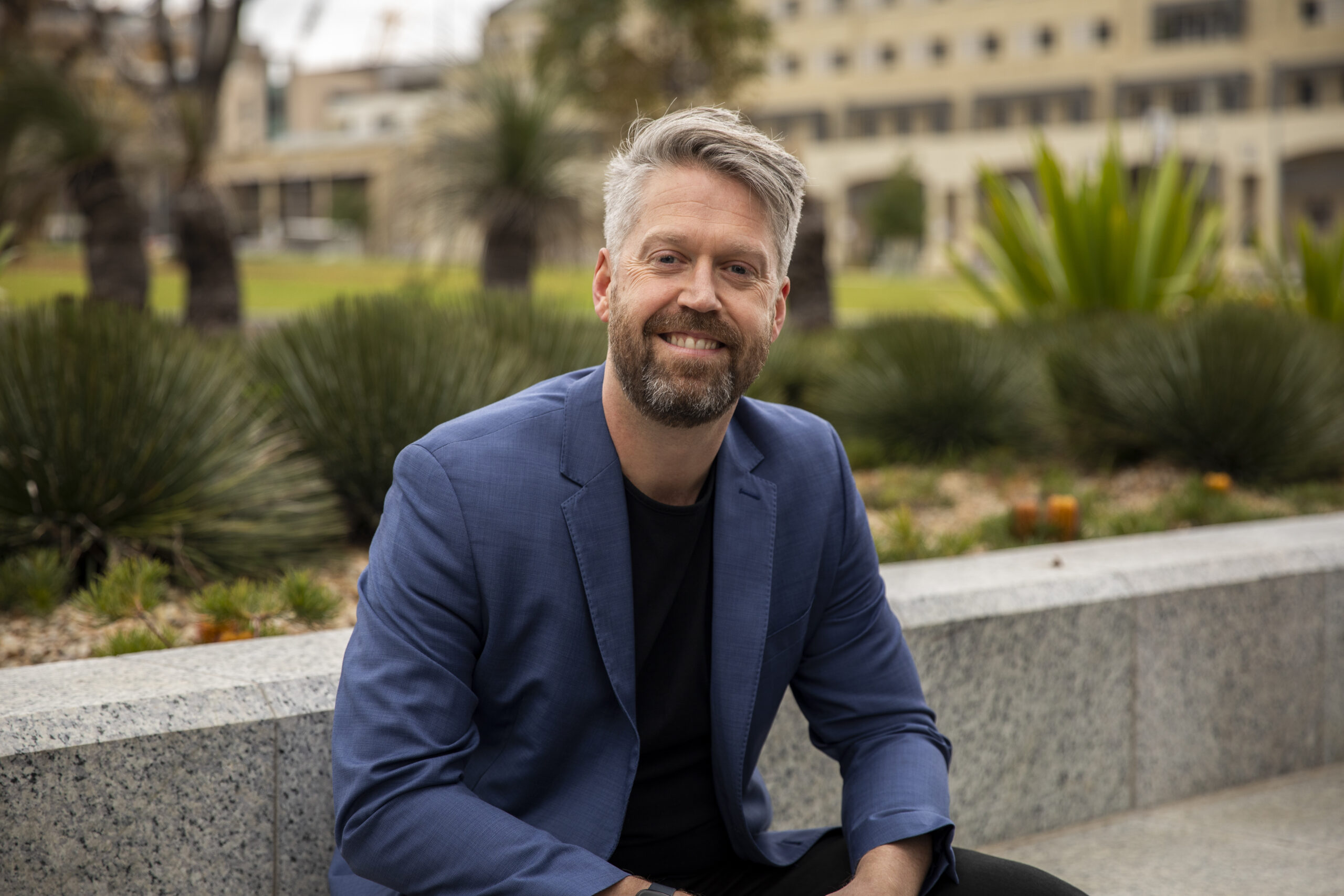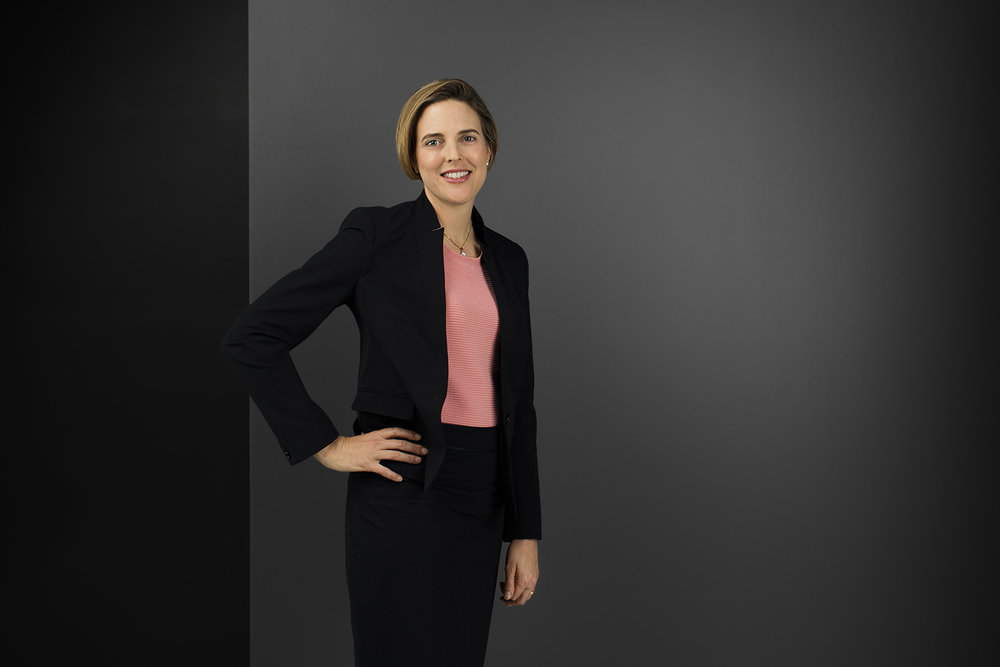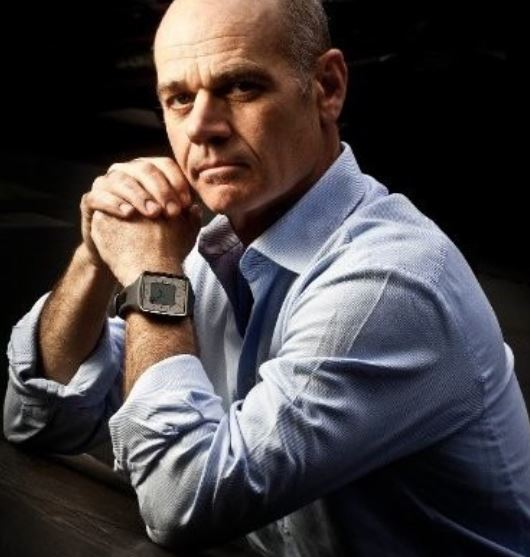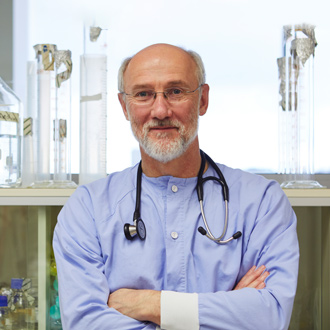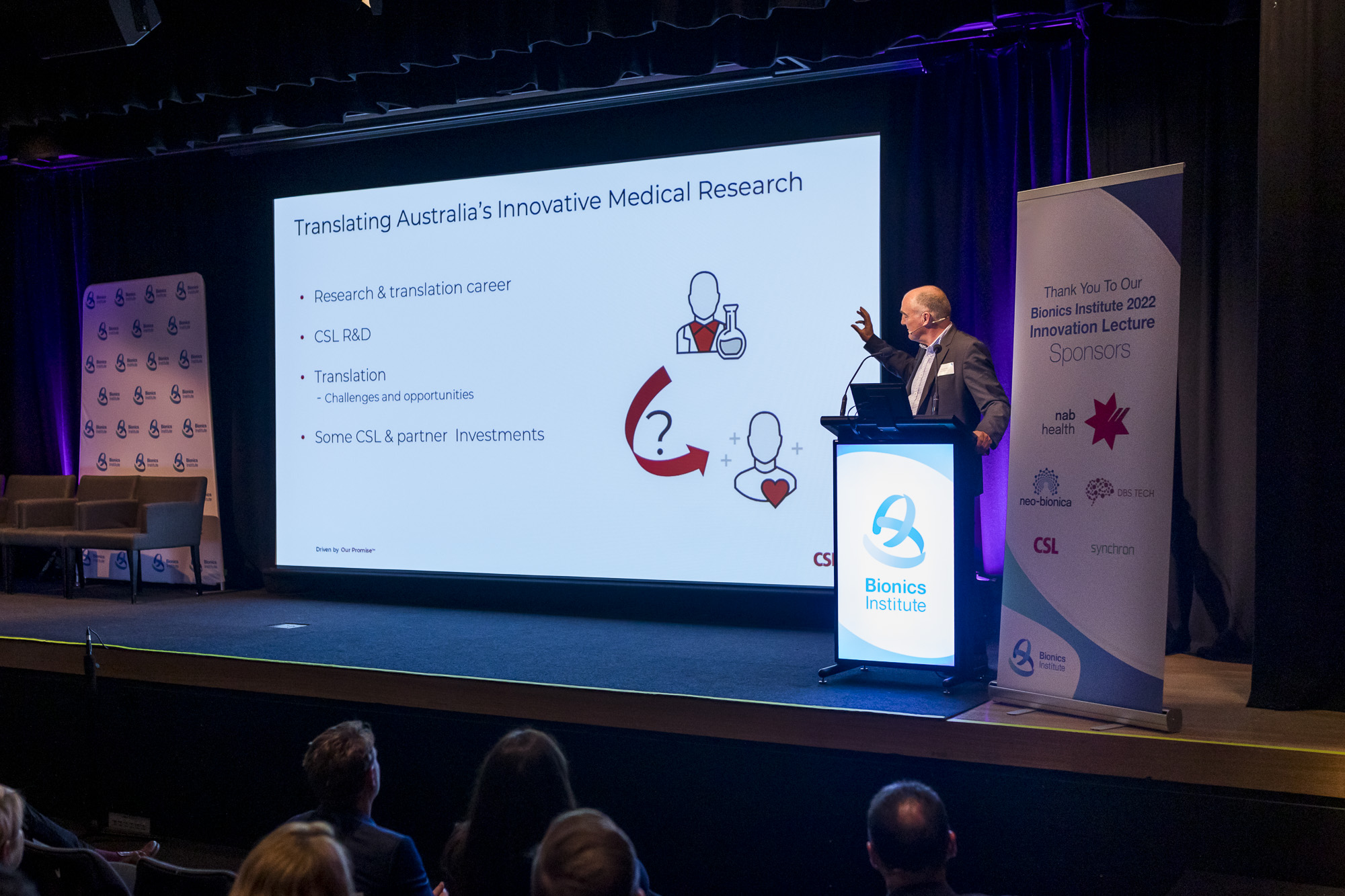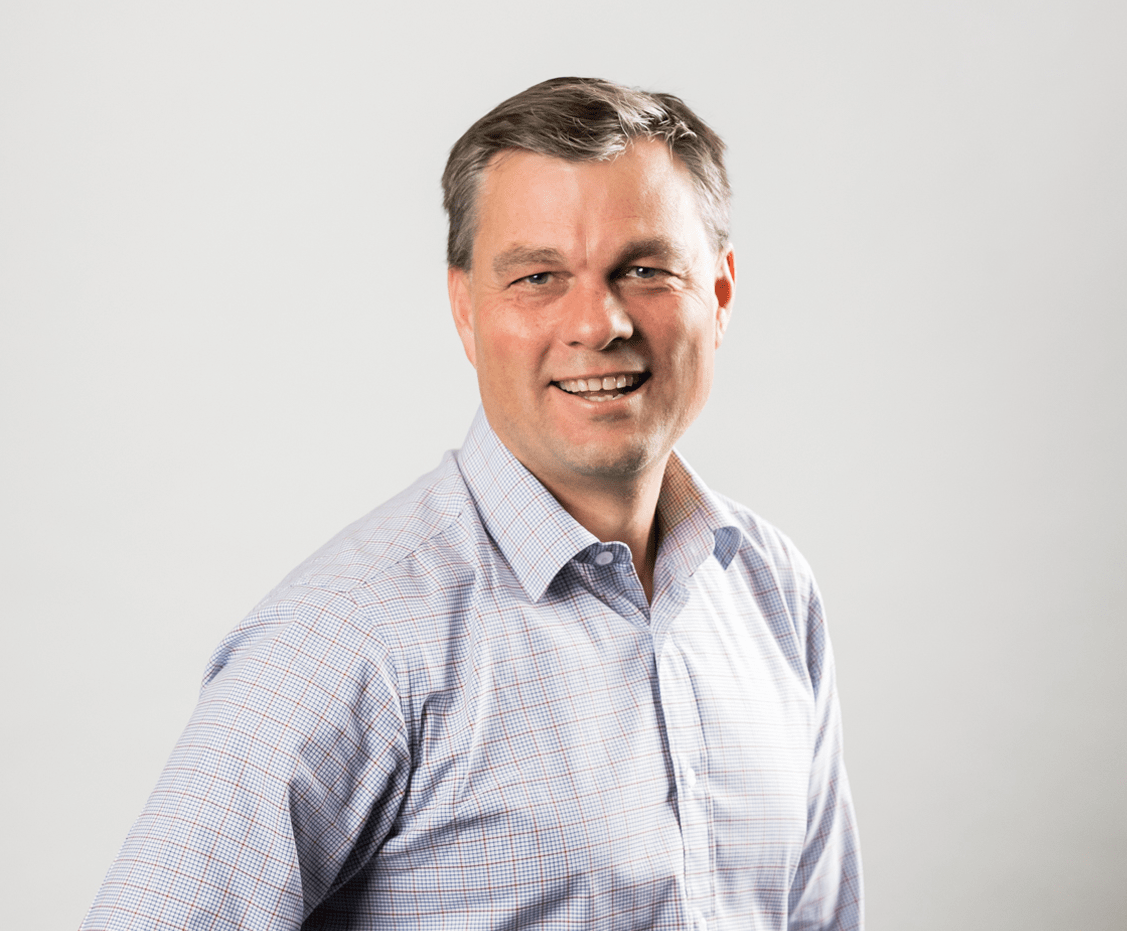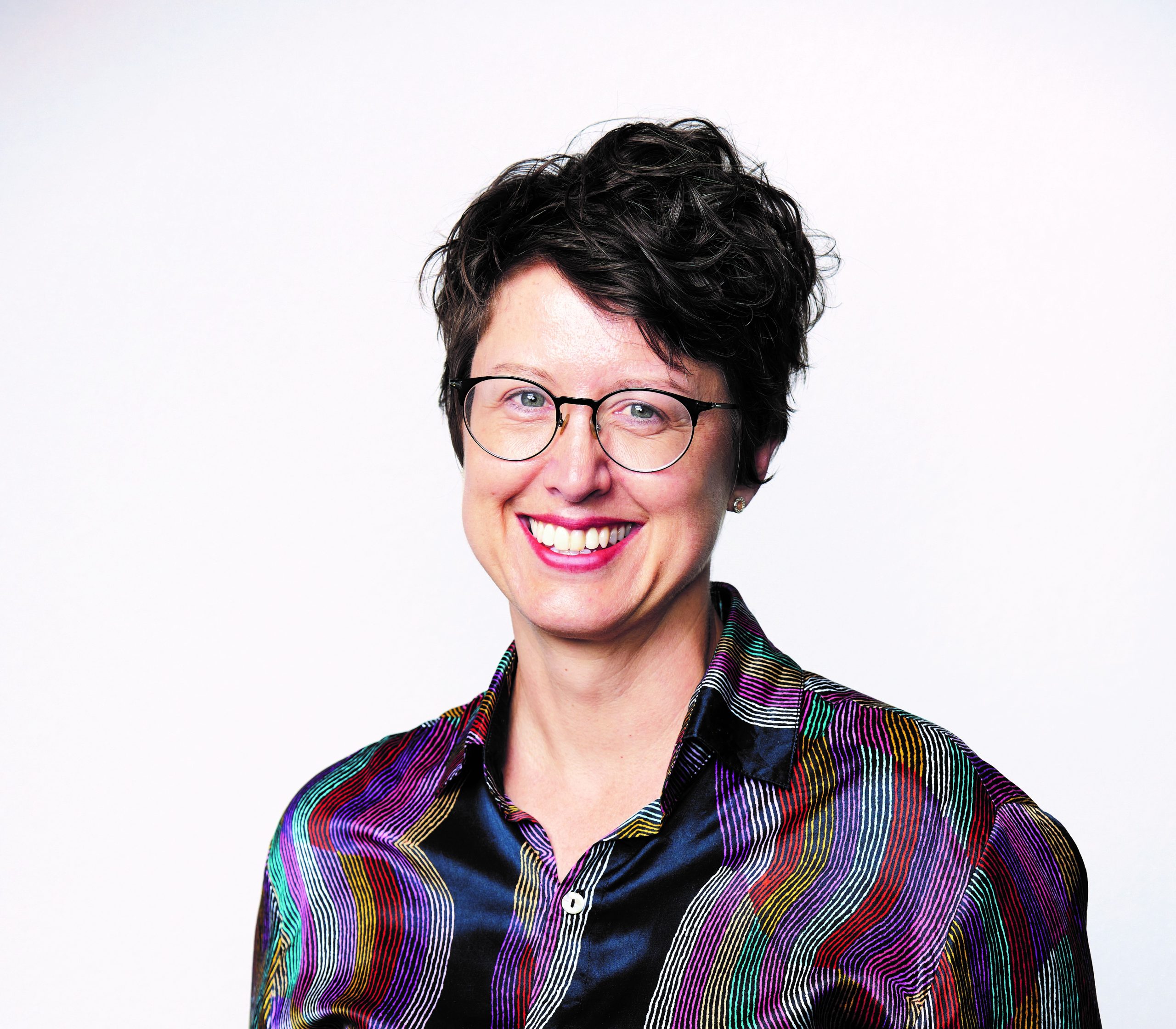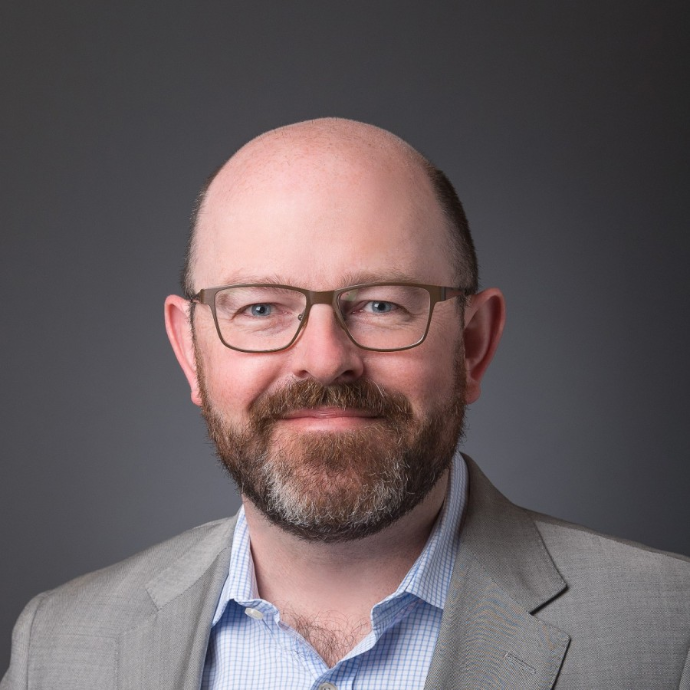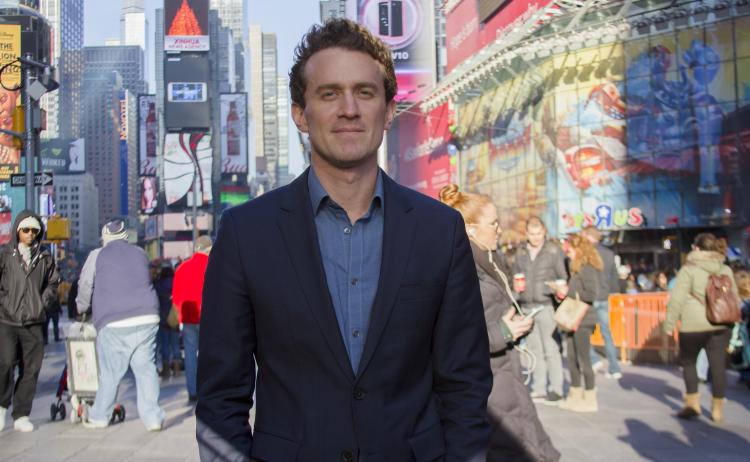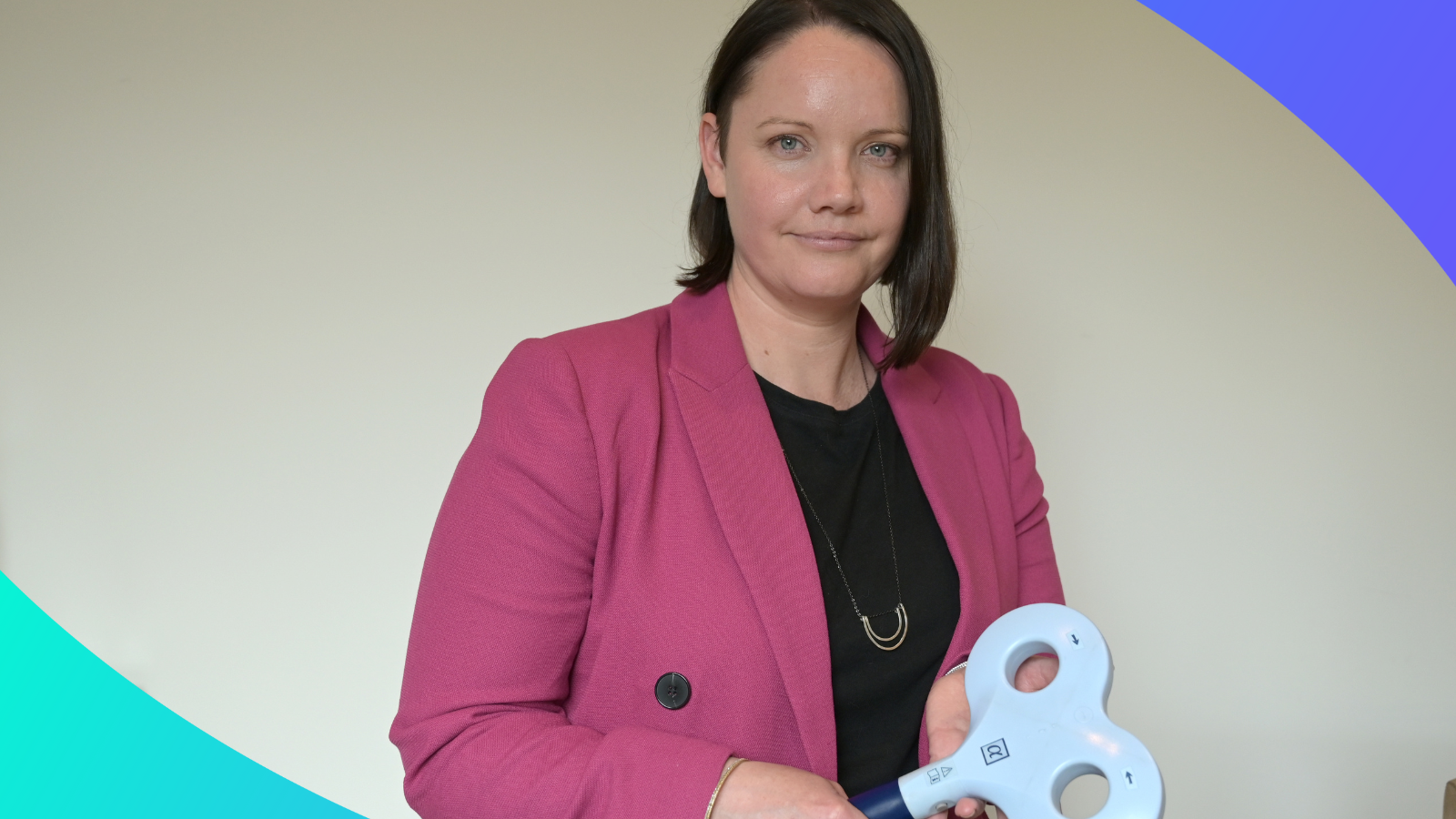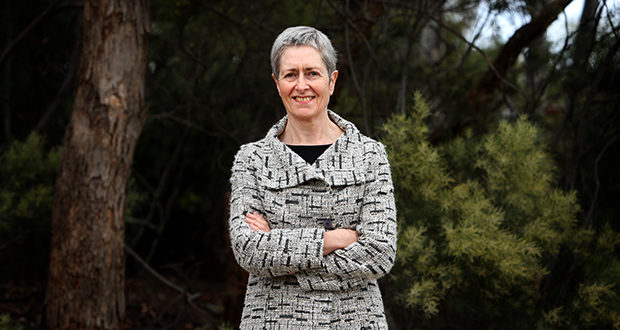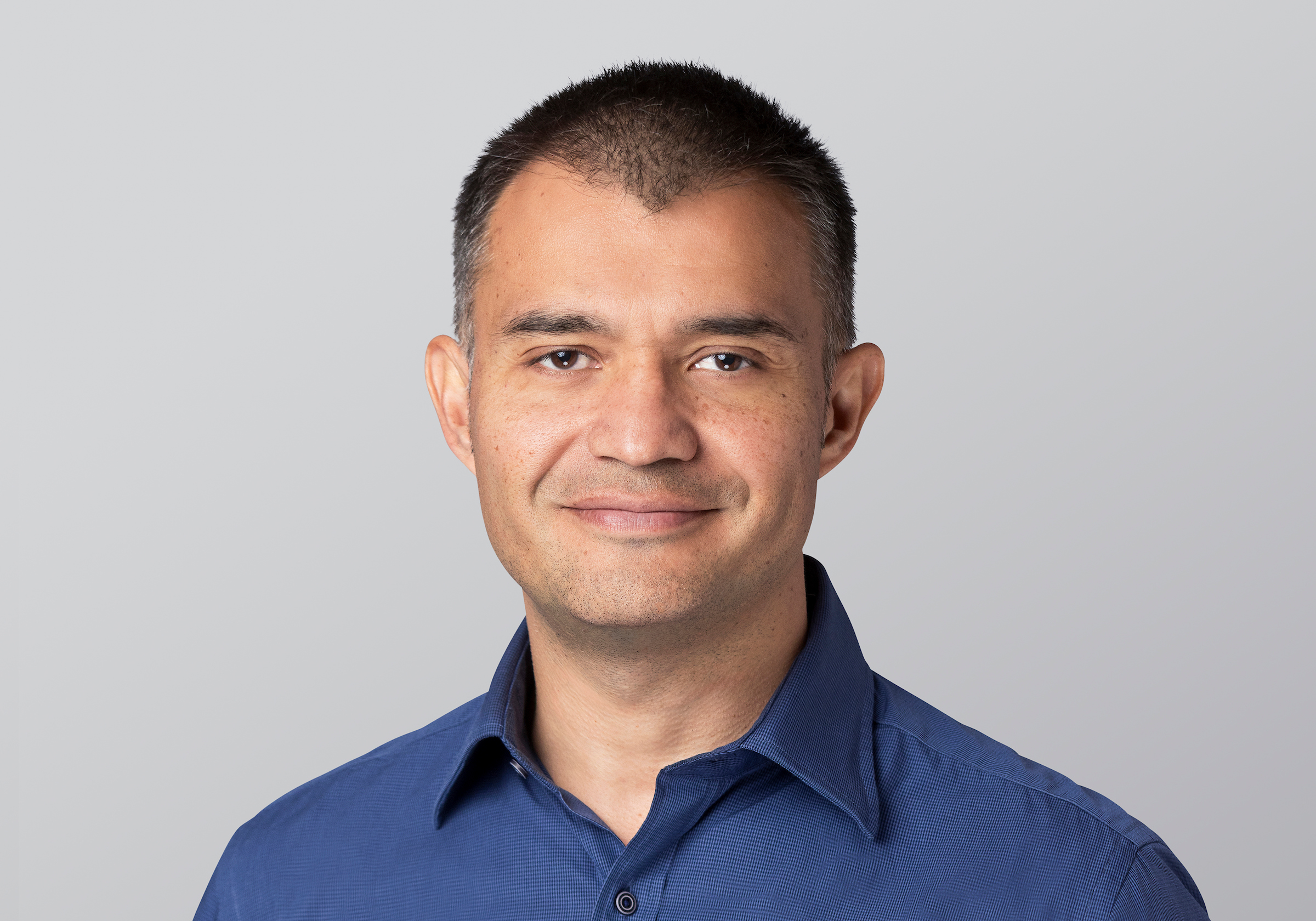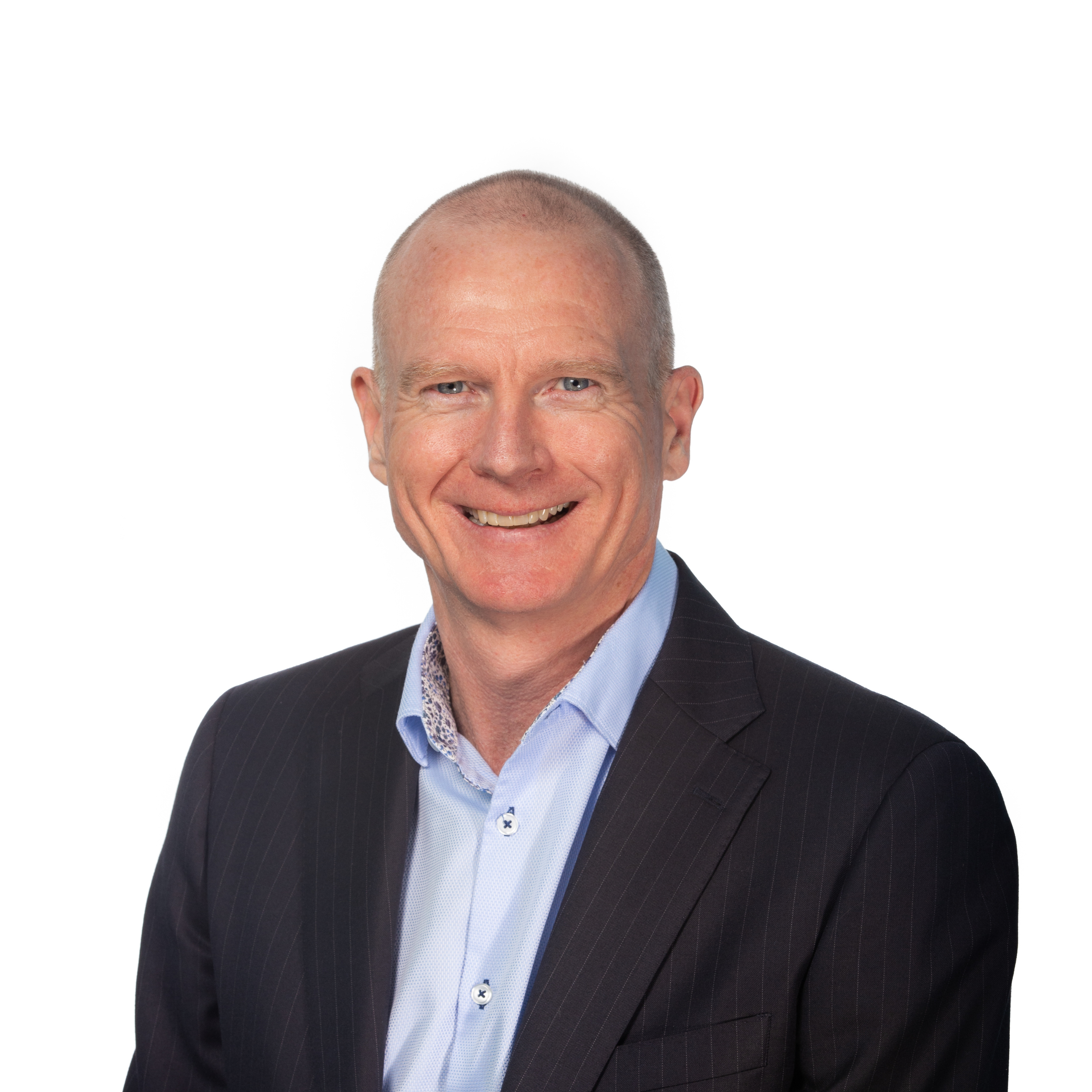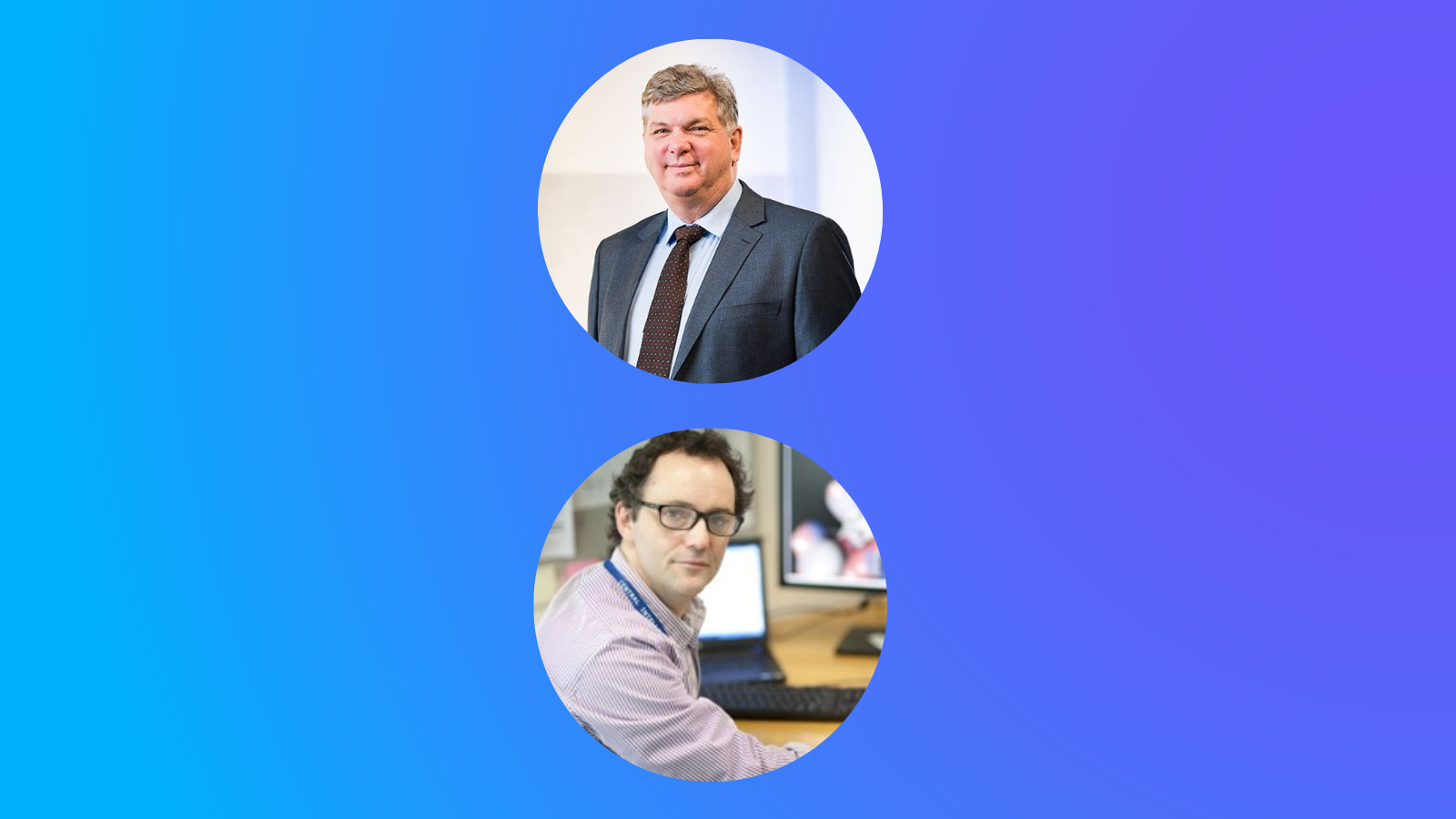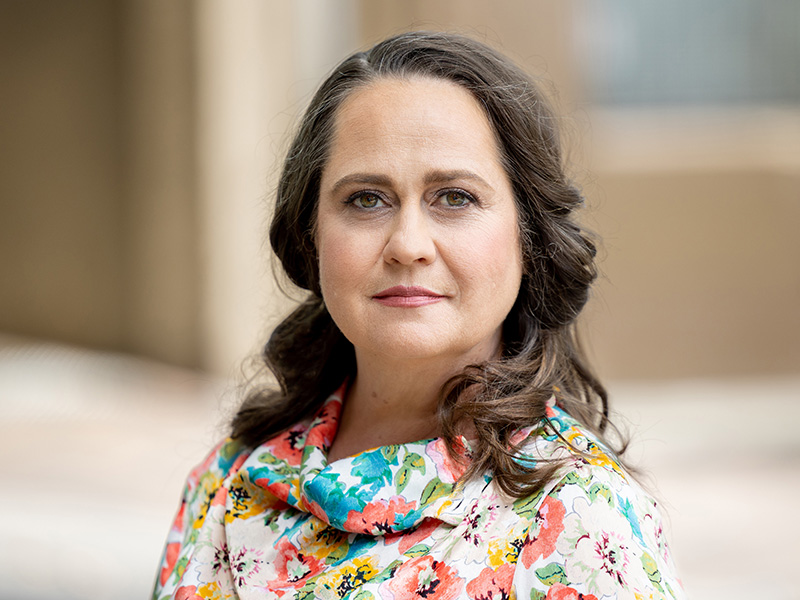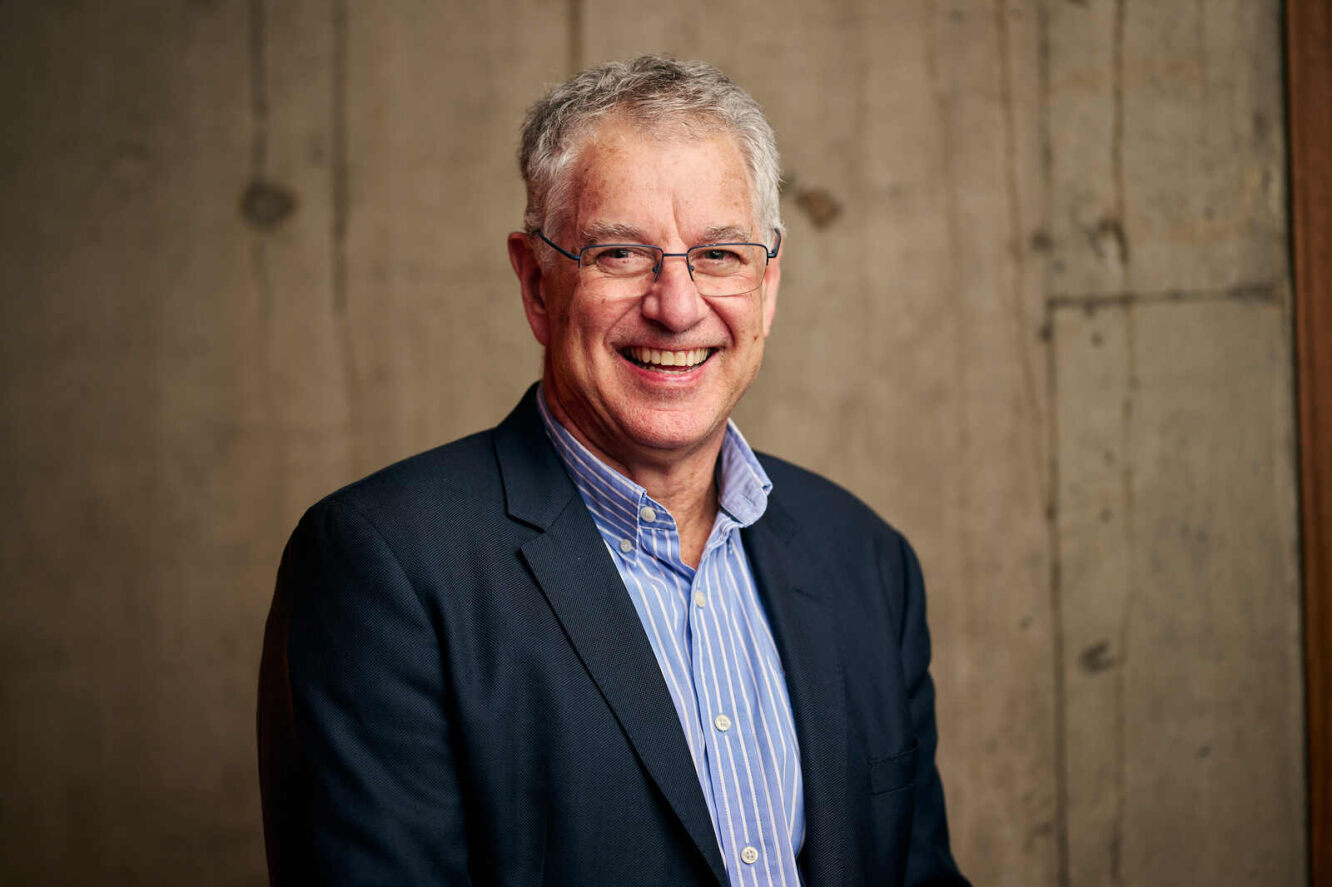Med Tech Talks
Deconstructing the Australian Med Tech Ecosystem with Dr Paul Minty
In this episode of Med Tech Talks, Dr Paul Minty shares the one key attribute that elevates the best engineers above the rest in the med tech industry.
Dr Paul Minty is COO of the highly innovative company, Deep Brain Stimulations Technologies Pty Ltd, which was established in 2019 to commercialise an adaptive deep brain stimulation system for Parkinson’s disease.
DBS Tech’s system uses a novel brain signal called Evoked Resonant Neural Activity (ERNA), to help surgeons implant electrodes in anaesthetised patients during Parkinson’s surgery with greater accuracy.
This will transform the experience of patients, as they currently need to be awake during surgery so that they can report on symptoms and guide placement of the electrode.
In this episode you will hear about:
More information:
Deep Brain Stimulation Technologies
Dr Paul Minty [00:01:14] It’s great to be here, Robert. Thank you.
Robert Klupacs [00:01:17] Got quite a few questions for you because few my friends, if want to know more about you. So I’m hoping this will be a heavily downloaded podcast.
Dr Paul Minty [00:01:24] My fans out there. Don’t worry, they’re all waiting for the inside goss.
Robert Klupacs [00:01:27] Okay, let’s jump in. You hold a Bachelor of Engineering from the University of Melbourne and then went on to a Ph.D. in engineering at the same university. Where did your interest in engineering first come from here?
Dr Paul Minty [00:01:39] Great question. Well, I knew what an engineer did because my dad was one, so I had some firsthand knowledge of what they actually did, and that’s rare. A lot of people don’t understand what engineers do. So it was a great opportunity. But what got me over the line to actually decide to put in the time and effort to get qualified and work there, it just has a mix of imagination and creativity plus analysis. I love working things through and being useful as well. I love handing someone something that’s useful as real buzz for them to be, you know, gratified that their life’s a bit better because you’ve created something that’s that’s helpful. So engineering has that mixture of things that really attracted me.
Robert Klupacs [00:02:19] Looking up at your CV and your history for this podcast, you’ve had a very interesting career going from Engineer, as I mentioned before, to software engineer, entrepreneur, and then working for the key liaison for the family company, where I understand one of your clients was Mercedes Benz and while at the same time completing a Ph.D. on the job and from there you’ve come to be is tick. Yours is not the standard career path, my friend. What led you to make the choices you did? What have you learnt along the way? What would you say to a young engineer just starting out from your experience?
Dr Paul Minty [00:02:53] Oh, that’s a great question and I’ll I’ll launch into my life story on that one. First thing to tell a young engineer is while you’re working full time, it’s nuts. They’re right to tell you never to do that. That was a crazy part of my life. But the reason I made those kind of choices was to get myself into learning situations. Say, when you work, it’s great to earn some money and all that kind of stuff, that you really are there to acquire skills, experience, knowledge. So each of those choices was getting me into a situation where I was exposed to people who are really good at what they did and got me really close to the action. So a small boutique family business in the manufacturing that I worked at, the principles there, the family dad are all excellent engineers, excellent manufacturers, and because it was a smaller company, you can be really hands on with with everything that happened, whereas a bigger company you’d be isolated from, from a lot of the action. So I’m running my own business. I wanted to know how business worked. At one point I have money worked. So the best way to do that was to start a small business for myself and get really hands on with it. Gave me a chance to meet a lot of great customers. They taught me a lot about business. My clients taught me a lot about what they are trying to do as they were adapting to new technologies in the commercial space. You mentioned Mercedes Benz, that is Mercedes Benz defence, so they supply G wagons here in Australia. So yeah, another great opportunity. They wanted to do some engineering design in Australia. It’s a centre back to home office in Germany. It would take eight months. They wanted to turn around a lot quicker than that. So working with local manufacturers and engineers gave me a chance to turn around and work for the Commonwealth a lot quicker and for me it was a chance to work with our systems. Engineers get trained up in systems engineering. For someone who really knew that and systems engineering is the discipline at the heart of defence industry and also the discipline at the heart of the medical device industry. So that proved really, really good. It’s been a weird career and a felt like coming into DBS tech and the role that I’ve taken up here was really the fruition of a lot of that. So I wouldn’t have been able to do this job without all of those really direct experiences. And, you know, acquiring that breadth of skills is what’s been necessary to step into the current role really successfully. So this is probably the first sensible career decision of Michael.
Robert Klupacs [00:05:15] Moving to the present day. As you said, you’re now the CEO of DBS Tech, which is trying to significantly improve and simplify deep brain stimulation in Parkinson’s disease. For our listeners, can you describe. A little bit about the history of deep brain stimulation and the current limitations of the treatment.
Dr Paul Minty [00:05:33] Yeah, sure. And I’m not a clinician or anything, so I’ll just give you sort of a layperson’s understanding of it. So deep brain stimulation requires putting a little bit of pulsating electrical current into the brain tissue. It’s called deep brain stimulation because we’re right down in the heart of the brain, in particular when we’re treating people living with Parkinson’s disease. There’s a couple of spots pretty much in this in the centre of the brain that we want to stimulate electrical electrically to get the stimulation in. There’s some small electrodes that get implanted in the brain and they stay there for the duration of the treatment. But the treatment itself is actually the little bit of electrical current. So that was first used in the treatment of Parkinson’s disease patients in the early 1980s and was progressively approved and became widespread through there and into the 1990s. It’s a there’s a couple of challenges. One of them and the methods behind it and one of them is just specific sort of challenges. So the specific stuff is you need to get those electrical pulses to exactly the right spot for it to be really effective. It’s a tiny little target. It’s a cluster of some of, you know, brain tissue neurones that are firing that you need to get the electrical pulses to. Those neurones don’t show up very clearly on X-rays. It’s very hard to find out where they are during surgery. So positioning the therapy can be really challenging and it can be a bit hit and miss across different surgical teams across the world, depending on how much experience, how much exposure they get to do, if they’re on these services in their local community with a few operations per year, they don’t get the chance to really develop the skills to to target the brain portion really, really accurately. And the second challenge is a neurologist will set the electrical pulses and then the patient has to live with that same therapy day in, day out. And it’s not necessarily the best therapy for everything they want to do. Parkinson’s disease is a movement disorder, so maybe you have too much rigidity in your muscles or muscles tremble. You might have trouble with balance, your limbs might move spontaneously and at different times of the day, you want a different mix of treatments. So when you want to sleep, you want all your muscles to be completely still. And you could probably put up with a little bit of rigidity. But if you’re trying to type or do other detailed work play board game with kids in life, that kind of stuff, you definitely don’t want to need rigidity or anything to hamper those small muscle muscle movements, but you want to control that trembling and that kind of stuff. So the one setting that the neurologist has isn’t necessarily going to be the best for all those different conditions. Be really good to innovate in that space. But it’s a tough condition to innovate with because it involves brain surgery. It’s a tough condition that the people are living with, and there’s a lot of risks that need to be managed in the manufacture of the devices. So it’s actually quite a hard one to build experimental equipment with, really develop the research methods that are really prolific. So we’re addressing those two specific concerns, placement in the brain during surgery and and adapting the therapy to the people’s needs. But also we’re addressing the method deficiencies which make it really hard to innovate in that space as well. Yeah, we’re doing all of that. And I guess one.
Robert Klupacs [00:08:56] Of the big issues is that to have the surgery done, you have to be awake.
Dr Paul Minty [00:09:01] Yeah, that’s right . Because the neurologist wants to know if they’re in the right spot. So they actually do little test therapies whilst they’re implied in place in the electrodes and you need to be awake so you can respond to the neurologists instructions and so your muscles can actually tremble or become rigid or whatever. So yeah, I think I’d be pretty nervous having brain surgery while I’m awake. I certainly have, you know, local anaesthetic and that kind of stuff.
Robert Klupacs [00:09:26] You’re awake while you’re having your brain skull drilled.
Dr Paul Minty [00:09:29] Correct? Yeah. A couple of has said I know the holes get drilled in the skull. Yeah. Cannula gets inserted down a really finally gets poked down through that your head is held rigid in a big steel frame that can be upsetting enough. Yeah. And you’re aware of everything that’s gone around during that process.
Robert Klupacs [00:09:49] To my next question. So our research team here at the Bionics Institute identified a brain signal called ERNA and developed a system to harness the signal to improve DBS treatment, which is what you’re developing at DBS. Tick Can you briefly describe the only signal and the technology under development? And more importantly, as you said before, the limitations? How is it ever going to come, the limitations of DBS?
Dr Paul Minty [00:10:16] Yeah, great. Yeah. And it really opens up a lot of possibilities for us and addresses those two shortcomings are debates that I talked about. ERNA is an evoked neural resonant activity. So that means that we ping the brain with a little bit of electrical currents and then we go silent and then we record and the brain responds with with some electrical activity. The brain itself produces a few pulsating currents and it’s pulsating on off negative positive kind of stuff. So that’s the resonance. Engineers call that sort of oscillation or vibration resonance. And that brain signal is strongest when you’re really close to the right target. So if you’re really near that critical neural cluster that you want to put therapy onto, you get a really big in signal. So that was our first invention to actually harness that signal and work out a way that we can help surgical teams put the electrodes in the correct spot, really need to that neural cluster and help the neurologists target you know, precisely which electrode to use to to target that neural cluster. So that was the first advantage of it. And the guys have been working with that signal and it changes a little bit depending on the symptoms that a patient is experiencing. So we’re hoping to be able to harness that to adapt to therapy based on what the patient is doing. So when they’re asleep, they get a bit of therapy. When they’re moving, they get a bit of therapy doing fine muscle control stuff, doing big stuff like running had a slightly different therapy for all those situations because the unicycle can change a bit. Our system, we hope, will respond to those changes and adapt the therapy. So depersonalise for that for the patient over the course of the day. Yeah.
Robert Klupacs [00:12:01] I understand that The beauty of this is part of the beauty of the system, is it not? The surgery can be done if the system’s paths lead while the patient’s asleep.
Dr Paul Minty [00:12:10] Yeah, that’s right. So the only signal occurs whether you’re anaesthetised or not and occurs when you’re naturally asleep as well, which helps with that adaptation so the patient can be completely anaesthetised, not be aware of what’s going on in surgery, just fall asleep, wake up with the surgery or complete and they in a signal, you know, backed up by false ice with the x rays and whatnot. But the a signal primarily would be used to guide the surgical team into the correct location.
Robert Klupacs [00:12:41] Big advantage systems now in clinical trials. So where where are the trials taking place and where are you at?
Dr Paul Minty [00:12:49] Yeah. So we’re looking for products to come out over the next couple of years, which is pretty quick in the sort of medical device space, especially as something as delicate as brain tissue and electrical stimulation there. We’re doing ongoing clinical studies here in Melbourne, so we get to use several of the local hospitals here. So Vincent’s Cabrini and Austin and there’s ongoing translation work there. So we’re working alongside a commercial team and we’re feeding them great data and a great understanding of how to build a commercial device, but soon will be up and running at Oxford in the UK and also in London. So the school to neurology there, which is one and both of those centres are among the top ones in the world and the researchers, they are really keen to get involved. They’ve agreed to let our protocols and our devices be used. They’re really excited to use our methods, our results and yeah, great validation that some of the top researchers in the world are happy to take our lead and join in on that kind of ongoing clinical studies. But look, the bulk of it’s going to happen here in Melbourne. Melbourne is a great place to do clinical studies, It’s a great place to do research. So even though we’re hitting up some of the top places overseas, the valley really is, is the ongoing work here in Melbourne. Yeah, so that’s exciting.
Robert Klupacs [00:14:09] But so you’ve been doing a take now for about two years.
Dr Paul Minty [00:14:12] Yeah, a couple of years in.
Robert Klupacs [00:14:14] So in your opinion, what do Australian Start-ups or university spinoffs need to do well to be successful and what should we do to ensure that Australian companies don’t have to go offshore? An easy question for you.
Dr Paul Minty [00:14:26] Yeah, an easy question. Explain to everybody how to do medtech in a quick, quick answer. Yeah, it’s a tough one, isn’t it? But yeah, there is. Yeah, definitely principles, things that we’re doing that helps us be successful. So being really agile with our research is been important. Being really open to listening to commercial companies as to what they feel they can actually get into the market, what will be acceptable to clinicians, to patients, and being willing to let our research be guided by that. That’s an important part of closing the loop and being good at what we do and being really on top of safety, being really on top of ethics management, being really on top of analysing data, you know, being good at what we do helps us be agile. It means that we’re not slow to respond to new ideas coming from our partners, whether they’re clinicians or commercial companies. And that closes a loop means we can focus on creating value, doing something that people actually want. Rather than just trying to sort of hold on to an idea that maybe other people don’t want, that it’s the only thing that we can actually execute. So, yeah, we’ve dedicate ourselves to being really good at the core business that we need to do and so good that we can respond to the messaging that we’re getting from clinicians, commercial partners, that kind of stuff. I think the second part of your question was how do you stay in Australia? And I don’t know about other companies, but for us we definitely want to stay in Australia. It’s a real competitive advantage for us and great research cohort here. So we want to keep working with a bunch of clinical researchers. We certainly have great access to engineers, so that’s really important to us that we get great access into hospitals. You know, it’s you got to do all your due diligence and there’s a lot of work involved sitting up properly so everything’s safe and well managed and all that. But I don’t put up unnecessary barriers and that’s great. So getting access to clinicians into hospitals is much easier here than what we’re hearing overseas. We’ve had a study sort of got initiated within a year and it’s been running for about a year. In the same time, some of our partners overseas have really barely got to square one planning their study. There’s been so much bureaucracy, red tape, confusion as to who they need to satisfy in order to run a clinical study. Yeah, it just really struck home how quickly we can move doing work in Australia compared to some of the people we’re alongside overseas. So, yeah, we’re keen to stay in Australia. Maybe other companies just need to recognise the competitive advantages that we have here, make sure they cling on to them. And probably one of the downsides as well, something that would draw us away from Australia, would having to go and work with a manufacturing facility that’s overseas. It’s not a trivial thing to set up a manufacturing facility and get all its validations and quality systems up and running so they don’t tend to be agile or mobile. And if your business model says you have to manufacture or you have to be close to a manufacturer, you will tend to be drawn to where that manufacturing plant is located. So we’ve been very cautious about falling into that trap.
Robert Klupacs [00:17:41] One thing I’ve noticed from your CV is that you are very passionate about teaching and inspiring the next generation. From your perspective, can you just tell our listeners the importance of having good teachers and in particular mentors?
Dr Paul Minty [00:17:53] Yeah, that’s a great question. They are really critical for a bunch of reasons from me. From my perspective, I still value the connection back to teaching. I still try and teach at the University of Melbourne when I can to engineers, particularly in design, is I want to close the loop for them. So people starting out in their careers, they need to know what kind of skills they should be developing and what kind of fields active and hot. And I think it’s up to industry to sort of get in the face of students and let them know, Yeah, these are directions that are worth pursuing. These are definitely the skills you need to be setting yourself to get. So yeah, I’m keen to be involved just for that. But yeah, people want to seek out good teachers, good mentors in our field. You need to be self-motivated. You need to be optimistic. Well, the challenges we take on a good once they’re solid ones, you shouldn’t be easily daunted if you want to take on, you know, one of these worthy challenges that we take on and teachers and mentors give you that kind of hope, encouragement, skills, and that you’re not daunted by taking on something that’s really worthy of your efforts. You know, poor teachers, poor mentors or lack of mentoring can leave you uncertain whether you’re capable of taking on a challenge. And that’s a bad place to be. So I’d like to see people starting off their career really enthusiastic, wanting to take on big challenges, not being daunted by it. Yeah, and I think teachers and particularly mentors give a lot of guidance and they’re the raw material that we can then absorb into our team. People who are brave, enthusiastic, skilful. We can find a place from our team, you know, the people who are hesitant, that’s harder. You know, there’s a lot more work we have to do to make sure that they come into the team in a helpful way. So that’s why I value it.
Robert Klupacs [00:19:44] And following on from that. So again, for our listeners and particularly the younger engineers, what do you think separates good engineers and great engineers? Because I know you’ve seen embed engineers, I know you’ve seen them all have.
Dr Paul Minty [00:19:56] Yeah. And I’ll get to work with a couple of great engineers in our team at the moment, and I’ve worked with great engineers likely. Yeah, it’s, it’s probably an intangible thing. I’d say it’s imagination really sets them apart. But that’s a bit esoteric, isn’t it? I think the imagination helps them in two ways. They’re not satisfied with simple answers to stuff. I just suspect that there’s something else going on. So they tend to be quite happy to get down into detail and do the analysis, do the thinking to really fully understand something. I guess if you starting out, you know, the kind of people who aren’t satisfied with the textbook answer, who want to build things for themselves, who who want to, you know, double check how they been taught, how things work, that often is, you know, a precursor to being a great engineer. But the other thing that imagination helps to do is actually helps them be great with people. So the great engineers are really good at communicating what could be what needs to happen in order to create a new future. Yeah, really good sharing that vision, really good of putting some making it tangible for people and really explaining the steps that are taken, the things that need to fall into place. So the great engineers tend to have that strange mix of analytical skill and people skills. And I think the common thread is that they’ve got a really well honed imagination. They can see things vividly, they can see things in detail, and then they can articulate that. Yeah.
Robert Klupacs [00:21:25] The next one is a question we’ve asked all our guests on the podcast, and I’m really interested in what you have to ask for. What do you think we can do in Australia to improve our innovation pipelines and the pathways to commercialisation?
Dr Paul Minty [00:21:38] Okay. Yeah, that’s a good question. Innovation pipelines and pathways. Well, pipelines is an okay word and I understand what’s being used, but I think one of the starts is actually to reframe it as an innovation ecosystem. So pipelines use because a pipeline seems reliable. You know, you get the same stuff delivered. It always happens. But a pipeline is fairly static. A pipeline just sort of transfers things. It doesn’t add knowledge. If you put fertiliser in a pipeline at one end, you get fertiliser at the other end of the pipeline, whereas if you fertiliser into the ecosystem, you get a whole bunch of productive stuff, you get other things growing, you get new things, you actually get value added. I think we can improve our innovation ecosystem by being okay with the variability and the ups and downs of a new system. And there’s definitely things you can do to harness an ecosystem and make it more productive. You can feed it, you can create a variety of conditions. You can be really systematic in the way you search through an ecosystem for what’s growing and what’s not growing. There’s ways you can be really observant as to what works and what doesn’t within an ecosystem. So you can expand those things and and maybe not the other stuff. So yeah, an ecosystem isn’t necessarily something that can’t be harnessed and worked with and made better. And I think it’s those habits we need to develop. Sophia Hesitant about variability. If you’re dismayed by things dying and failing, then yeah, you’re not going to be out of work with an ecosystem really well. So that’s the thing, is that we can do better the way we manage risk our expectations that we lay on researchers, on on innovators. All these things need to be adjusted in terms of, you know, trying to grow a healthy ecosystem. If we see something that’s growing in a jungle and we put up fences so that nothing can ever kill it and it’ll keep growing, and that would be, you know, called good risk management or, you know, sensible use of resources. But we don’t even know if it’s the right thing growing, you know, So it’s trying to keep something alive that really should just die and something else take its place. You know, you might need a thousand things to to crop up in some dark corner of a jungle. Maybe the 1001 thing is the actual thing that you need a harvest, the price of more as an ecosystem. I think that change in framework actually helps make things better.
Robert Klupacs [00:24:12] I know you’re really big on team building. Do you think Australia should should spend more time trying to recruit from outside to bring skilled people in, or should we be spending much more time investing in our youth of today?
Dr Paul Minty [00:24:24] Whoo! That’s a tricky one. I don’t mind where our team members come from, so I should say that. So I don’t mind people coming from overseas. Would I overlook local talent in order to go overseas? No, I wouldn’t do that. So I think it’s a mixture of those things. I, I don’t think universities automatically creates the people we need in industry. I think industry needs to take some responsibility to close the loop to to send a strong signals back not just to the universities but to the students themselves as to what are the skills that we’re looking for over the next period of time and what are the fields, what are the topics we’re interested in and get people sort of engaged in those as early as possible. It’s great if a student undertakes these studies that they’re, you know, undergrad or post-grad or postdoc with the view that they take an initiative to be looking at fields that are hot, to be proactively developing skills that are going to be useful. So I think, you know, we do that and you get to do that better with your local. University system say in that way? Yeah, I tend to always work with the local university system because we get that opportunity. But I’d never sit back and just expect, you know, the local talent to be just naturally better that what I can find overseas. I don’t mind people coming from overseas. If we’re offering a more productive ecosystem, sure, they’d be motivated to come work with us and they’d be fantastic. But I’d always want to ask, you know, why would I available to come here? You know, if I were so good overseas, why haven’t I already been snapped up? You know? But yeah, sometimes when you ask that question, you discover that, yeah, overseas they haven’t valued what they’ve been doing and it is worth bringing them in. So I guess I’m hedging their bets and sitting on the fence with that one.
Robert Klupacs [00:26:10] But you’ve done a great job.
Dr Paul Minty [00:26:12] Thanks.
Robert Klupacs [00:26:13] Just coming up to the last question. I mean, we touched on mentorship before, but it’s a really big theme in this podcast series about mentorship. So just to finish off, who who have been your major mentors in your life and what’s the one or two key things you’ve learnt from them?
Dr Paul Minty [00:26:26] Yeah, that’s great. Yes, I had great opportunity early days at the University of Melbourne to work with a fellow who used to be in the Navy, Australian Navy and had been procuring technology for the Australian Navy. So yeah, he really impressed me with his energy. He wouldn’t take no for an answer. He wanted details and yeah, impressed me that, you know, yeah, bureaucracy is not the answer, but good ideas and being willing to get your boots dirty and really understand the details was really important. And yeah, in industry again, people who really understood the underlying value of what they did and there might be a really specific manufacturing technique. So a couple of guys at the family business I work with and Russell Hughes is in the Victorian Manufacturing Hall of Fame, as is a great engineer, would be one of them. But the other family members that I work with there are also great. They were fantastic. And you know, I take a lot of pride in developing my team as well. So I’ve developed some of the soft skills outside of industry as well. I happen to go to church, so there’s a bunch of people there I’ve learnt from about valuing people for who they really are and developing some of the skills to sort of draw that out and really encourage people. Yeah, So yeah, also value a lot of the people mentorship that I’ve had from outside of industry to be able to work with people.
Robert Klupacs [00:27:50] That’s fantastic. Paul We’ve reached the end of our podcast today. Thank you so much for giving us your time, for sharing your insights into the medtech industry in your life and how we can improve innovation in Australia. We’re wishing DBS tech great success to our listeners. I hope you enjoy listening and I look forward to introducing you to our guests in future podcasts. There are links to everything we talked about in the show notes and we look forward to welcoming you next time.

Dr Paul Minty, COO of Deep Brain Stimulation Technologies
Listen to other episodes of Med Tech Talks here

